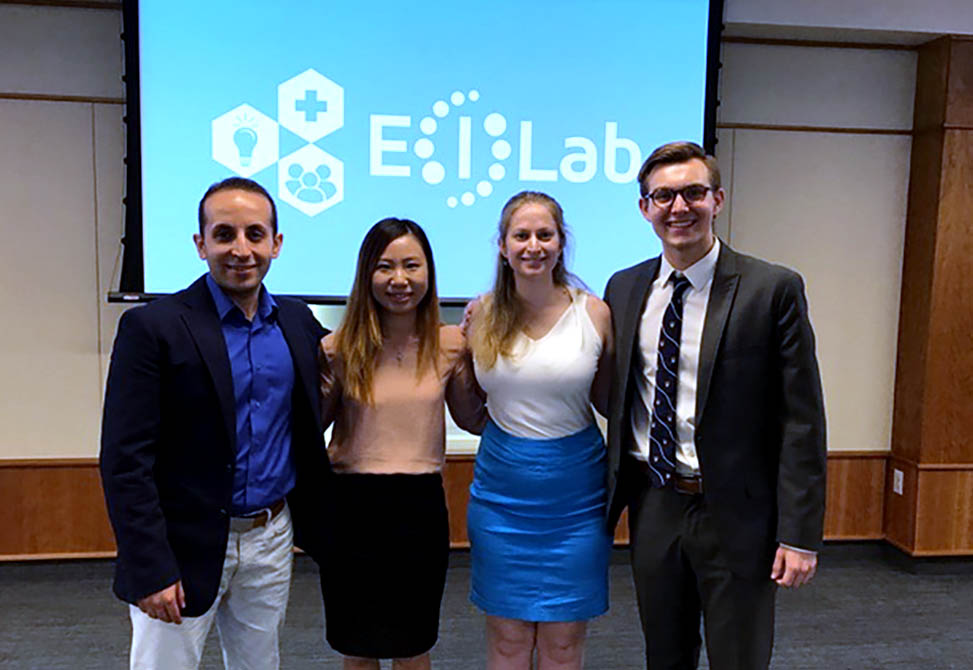Allergy Diagnostics
As part of the Eshelman Institute for Innovation’s E(I) Lab, Ahmad Hamad, Chuyin Fan, Jennifer Schiller, Steven Doerstling, and Lindsay Fernandez-Rhodes set out to create a device that would improve allergy diagnostics. Currently, allergies are diagnosed by administering a skin prick test, in which a solution containing an allergen is placed on the skin and a healthcare provider pushes the solution through the top layer of skin with a plastic prick. This procedure requires extensive training and still has a high rate of variability because it relies on the precision of the person administering the test. Consequently, the students wanted to create a skin prick device that delivers a consistent amount of force and provides reproducible results, no matter who administers the test.
To develop their prototype, the students relied heavily on resources at BeAM. All iterations were made on 3D printers, as that was the fastest way for the group to investigate their design and discover potential flaws. The students also consulted extensively with Charlie Cummings and Glenn Walters. Charlie, the Program Manager at BeAM, gave the group excellent advice in regards to the technical design of the device and general design practices. Glenn, who is on the BeAM Executive Board, first introduced the students to BeAM and helped with the mechanical aspects.
Overall, the students feel that they could not have created their prototype of a more reliable skin prick test without the resources and knowledge available at BeAM, and they certainly would not have won a pitch competition against the other teams in the E(I) Lab!

Pictured, from left to right, are Ahmad Hamad, Chuyin Fan, Jennifer Schiller, and Steven Doerstling. Lindsay Fernandez-Rhodes was not available at the time this picture was taken.